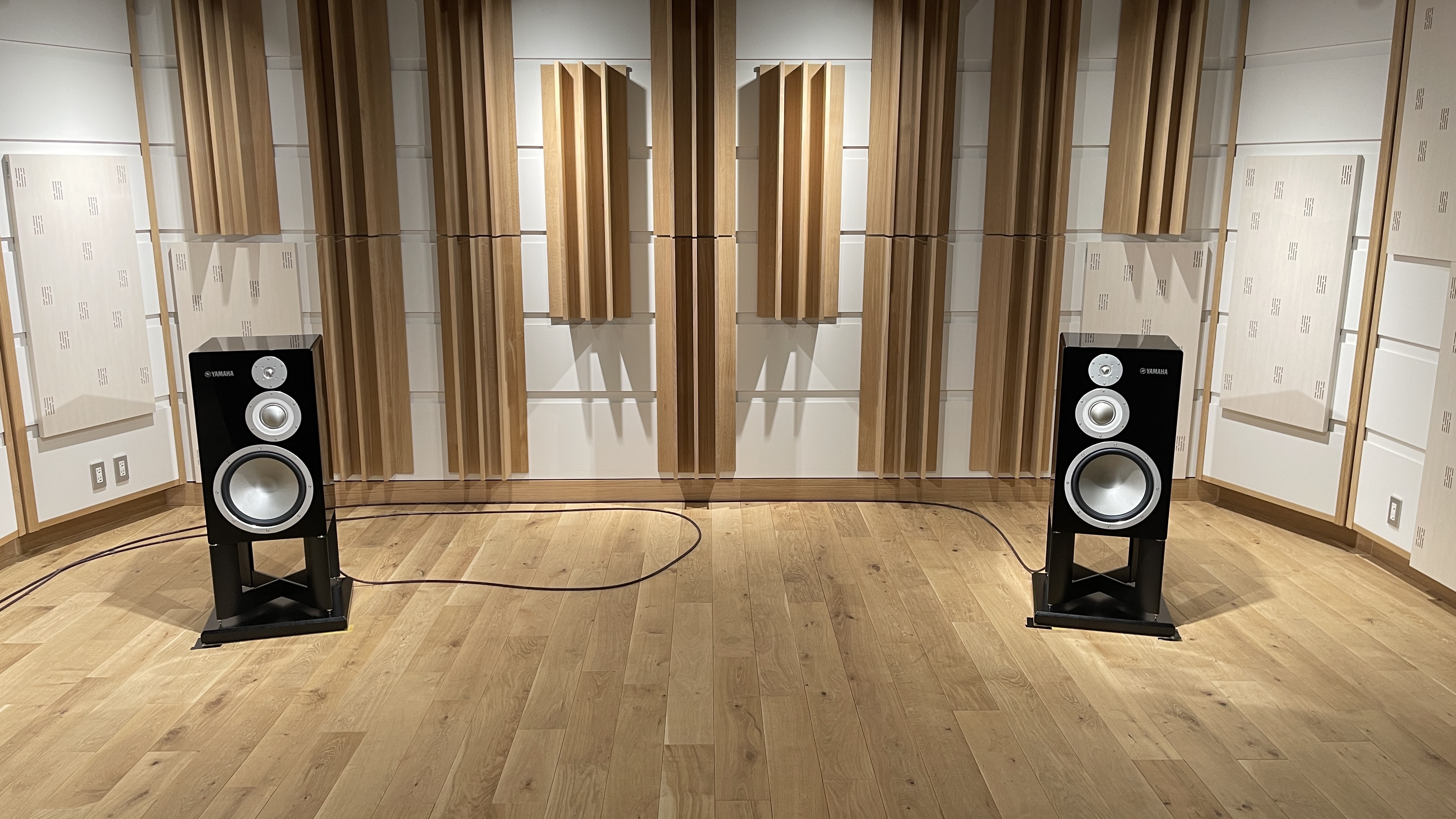What Hi-Fi? Verdict
This 4K Blu-ray player promises plenty on paper and backs that up with a hugely entertaining picture and sound performance
Pros
- +
Vibrant, immersive HDR picture
- +
Punchy, believable colour balance
- +
Powerful and weighty sound
Cons
- -
Could be dynamically subtler
- -
No SACD or DVD-A support
Why you can trust What Hi-Fi?
Sharing most of the picture processing technology with the more expensive DP-UB9000, this step-down 4K Blu-ray player from Panasonic began as an interesting proposition and has since become a mainstay of our AV test room.
The Panasonic DP-UB820EB has stood the test of time remaining our go-to recommendation for a 4K Blu-ray player that won't blow the budget. That being said, it has seen various price increases since it first launched, so does that mean we can still recommend it?
Well, while it does complicate the matter somewhat, the bottom line is yes. The flagship model still costs three times as much, and 4K Blu-ray player options have become more scarce since the UB820EB launched. That being said, just because options are limited, it doesn't mean you have to settle for a subpar-performing player, and the Panasonic proves that with its brilliant picture and sound.
Features
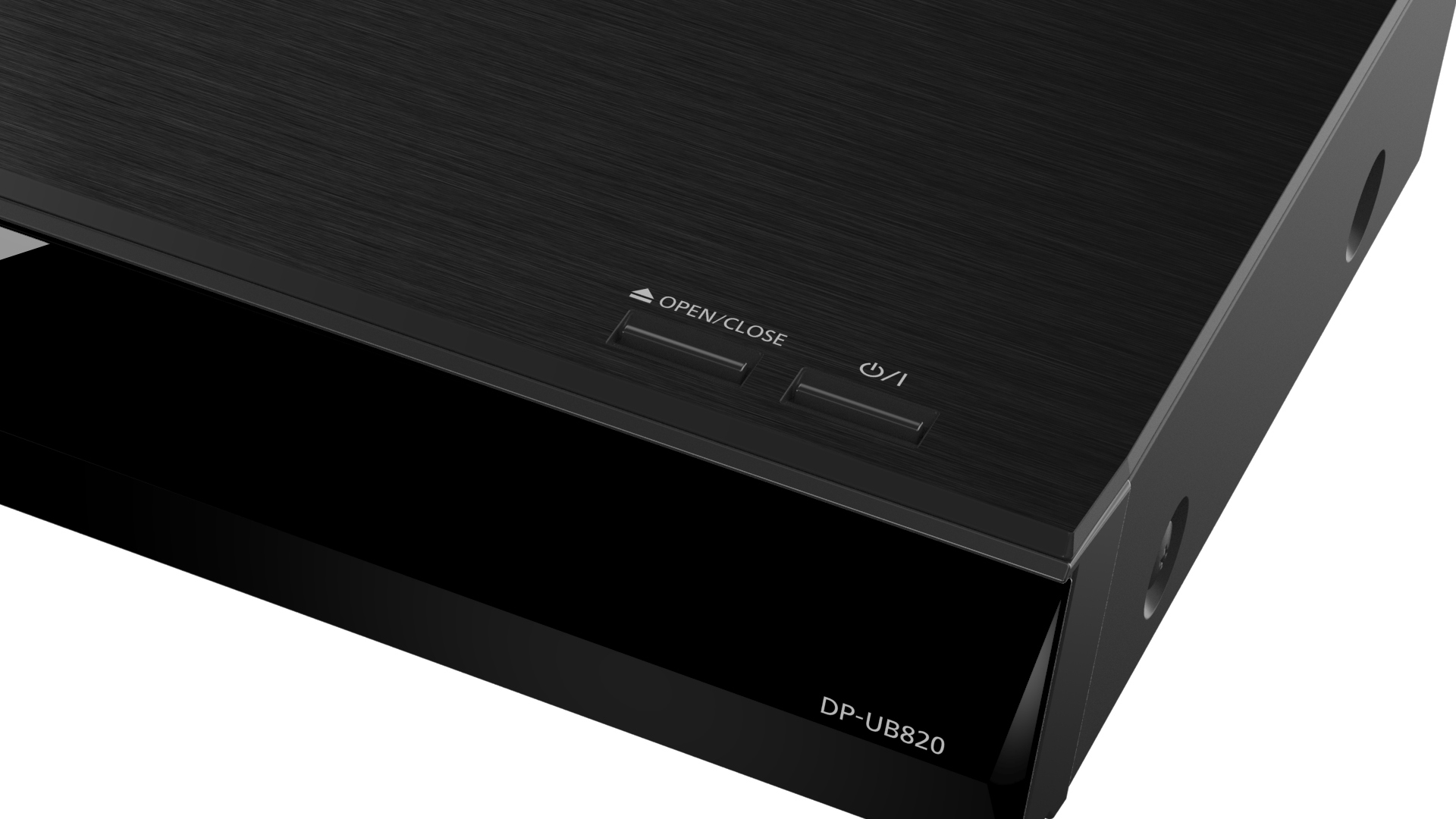
The Panasonic DP-UB820EB is a chunky rectangle of a deck. It’s a lot wider and taller than proper budget Blu-ray players and the beefier dimensions give it a more substantial look. The bevel cut finish around its edges looks attractive enough, as does the brushed effect on the top panel. But up close, the player looks and feels a little cheap and plasticky.
You get a matching chunky remote that fits nicely in the palm of your hand. It’s textbook Panasonic – the buttons are a good size and spread out instead of feeling cramped. It’s easy for your thumb to find its way around the wand, even if it doesn’t have a backlight.
The main unit is pretty minimalist in terms of design, with just two buttons on the top panel for power and opening/closing the drawer. The front panel drops down as the drawer extends out, revealing the player’s display (which is also visible with the panel up) and one of the DP-UB820’s two USB inputs. This particular one allows you to play content from a portable hard drive.
There aren’t many surprises on the back of the Panasonic, but it does tick all of the boxes you’d probably expect at this price. There’s ethernet for a wired internet connection (recommended if you’re streaming via the player’s built-in apps) while twin HDMI outputs give added flexibility for owners who prefer to split the picture and sound for their display and amp.
The provision of a set of 7.1-channel analogue outputs isn’t vital given the specifications of modern AV receivers, but it’s nice to have added flexibility should your system need it.
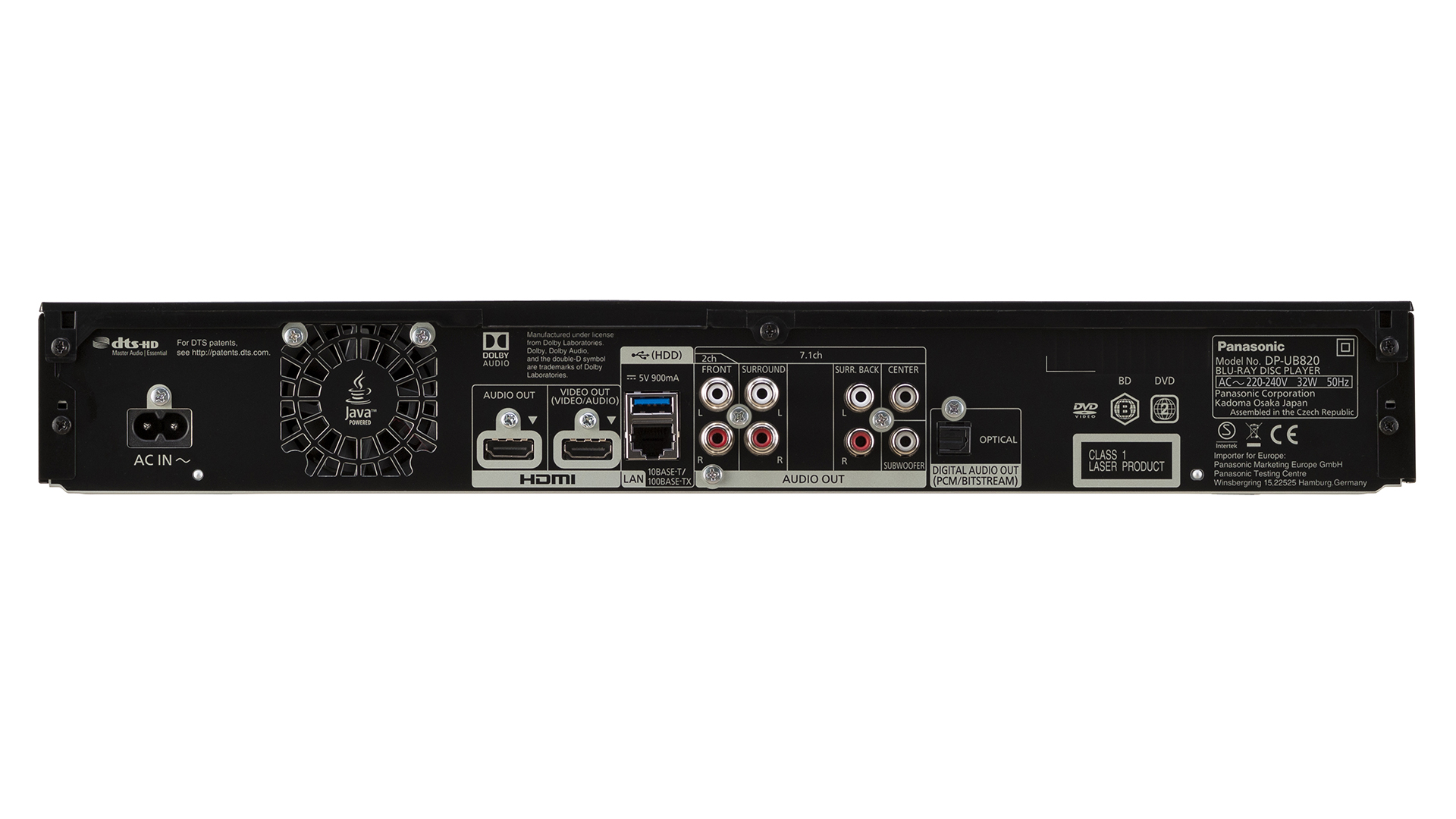
Unfortunately, you won’t be able to use the Panasonic to help revive any old SACD or DVD-Audio disc collections – neither of these formats is on the spec sheet. But it will handle the full gamut of surround sound codecs found on modern 4K Blu-rays and streaming services, including Dolby Atmos and DTS:X.
The DP-UB820 also covers all the necessary bases where HDR (high dynamic range) formats are concerned. There’s HDR10 and Dolby Vision support out of the box, and HDR10+ support too. If your TV supports these formats, the Panasonic will be happy to oblige. The same can’t be said for a number of rival manufacturers’ players. HDR10+ content is still relatively thin on the ground, but it’s starting to appear on more 4K Blu-ray releases.
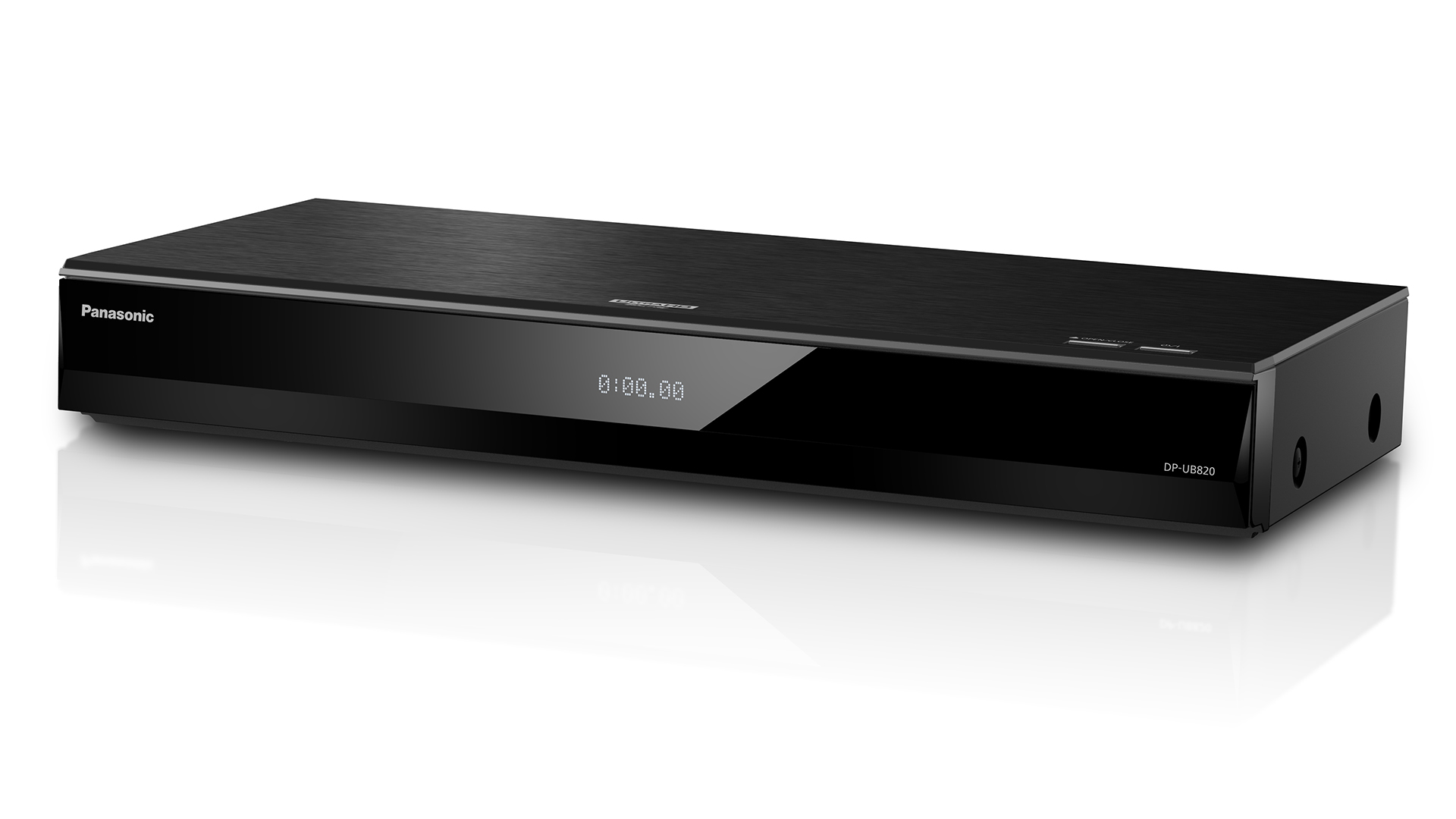
Outputs HDMI x2, optical digital, 7.1 multi-channel analogue out
Inputs USB x2
Audio decoding Dolby True HD, Dolby Atmos, DTS-HD Master Audio, DTS:X
HDR support HDR10, Dolby Vision, HDR10+, HLG
Dimensions (hwd) 6.3 x 43 x 20.4cm
Weight 3.5kg
Like its more expensive sibling, the DP-UB9000, the DP-UB820 is powered by Panasonic’s clever, second-generation HCX (Hollywood Cinema Experience) picture processing engine. This means it can call upon the chip’s HDR Optimiser, which Panasonic claims will improve tone-mapping in an HDR picture with static metadata. It takes into account the brightness limitations of your display and tweaks the image to extract the most detail, particularly in whites and bright scenes.
A press of the ‘HDR Setting’ button on the remote also gives you the option of tweaking the HDR intensity to compensate for different lighting conditions. The brighter your room, for example, the harder it can be for the extra punch of HDR to make a mark.
If you are watching content in Dolby Vision, which already uses dynamic metadata, the deck recognises this and will bypass the Optimiser completely. If required, the player can even downconvert HDR to SDR, which can be useful if you’re running a 4K projector that doesn’t support HDR.
All the key catch-up and on-demand video streaming services are at your disposal, including BBC iPlayer, Netflix and Amazon Prime Video. Not exactly a big deal if your 4K TV already has them, but handy to have if you’re plugging the Panasonic straight into a projector, which is likely pretty dumb by smart TV standards.
Picture
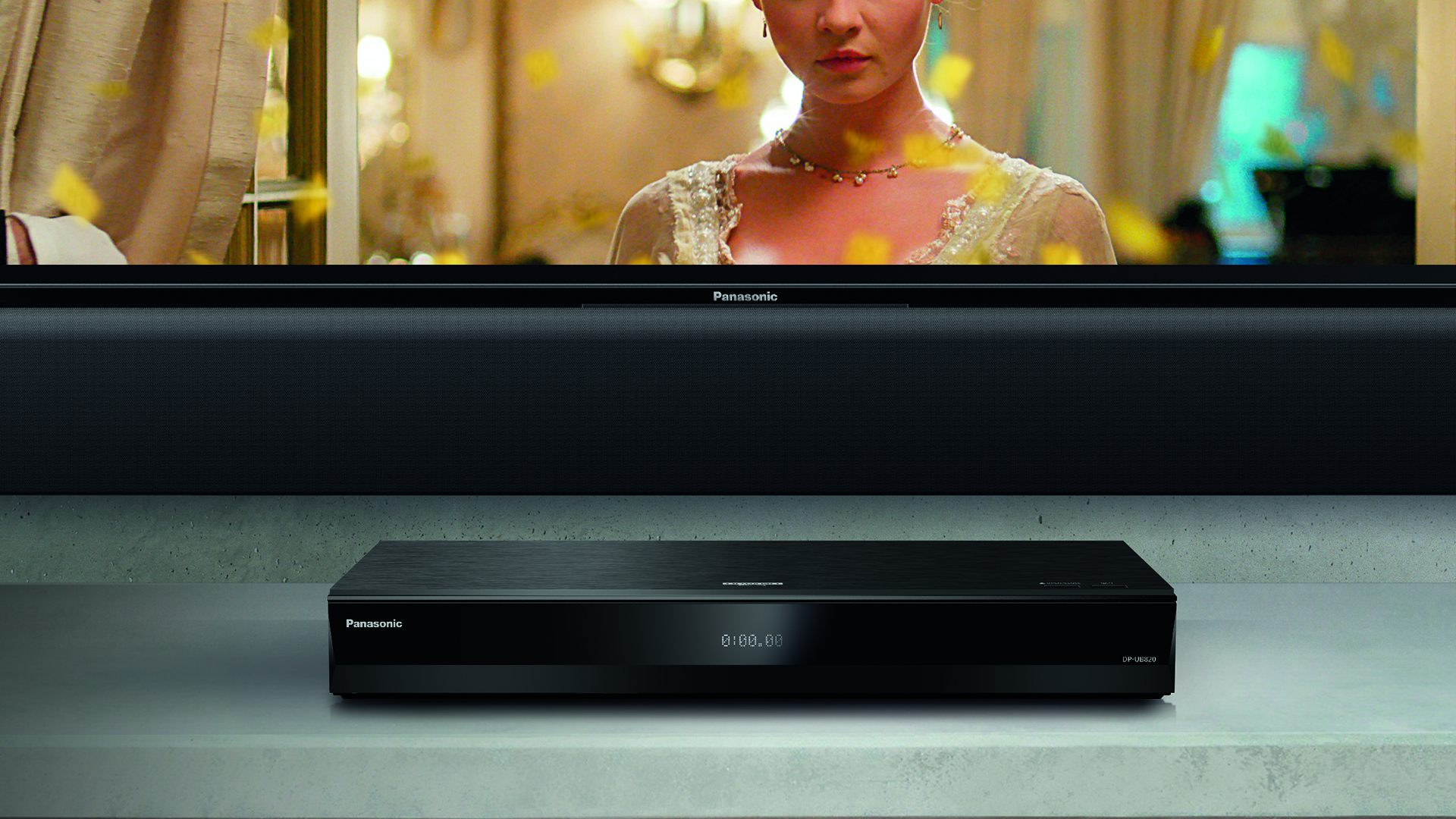
We fire up the player with Blue Planet II in 4K and HDR10. We head to the Galapagos Islands, where we’re greeted with a detailed and sharply drawn volcanic landscape. The picture proves to be as vibrant and immersive above sea level as it is below.
As marine iguanas nibble away at vegetation on the sea floor, the Panasonic picks up an impressive level of detail on their skin, claws, face and even the fine lines that separate their teeth. They convene on a sun-kissed clifftop, where the DP-UB820 paints an eye-catching and immersive picture.
There’s a sudden burst of vibrant colour as a crab appears to feed on dead skin from the iguana’s back. The crab’s reds, oranges and bluey-whites appear punchy, contrasting with the darker skin of their hosts.
We switch to Aquaman in Dolby Vision and the Panasonic raises the bar even higher. As the pirates arrive to board the Russian submarine, the headlights and the red landing lights on their underwater submersible punch through the murky depths.
As the action moves inside, the muzzle flash from a machine gun lights up your screen with concentrated and precise explosions. There’s a real sense of intensity to each blast. The clean, noise-free picture looks realistic and easily draws you in to admire details and textures in the black suits of armour.
The Panasonic delivers stable Sicilian rocky outcrops, adorned with rich green foliage – and combined with the bluey-green hues of the sea, it makes for one inviting picture. The player gives the rays of sunshine impact, but doesn’t overplay the sun-kissed scene as Arthur and Mera wander around the village market.
The DP-UB820 is a decent upscaler too. The original Transformers movie on Blu-ray is a stern test – there’s plenty of noise and the colour balance has a warmish tint – but the Panasonic does a good job of working the picture into something watchable.
Sound
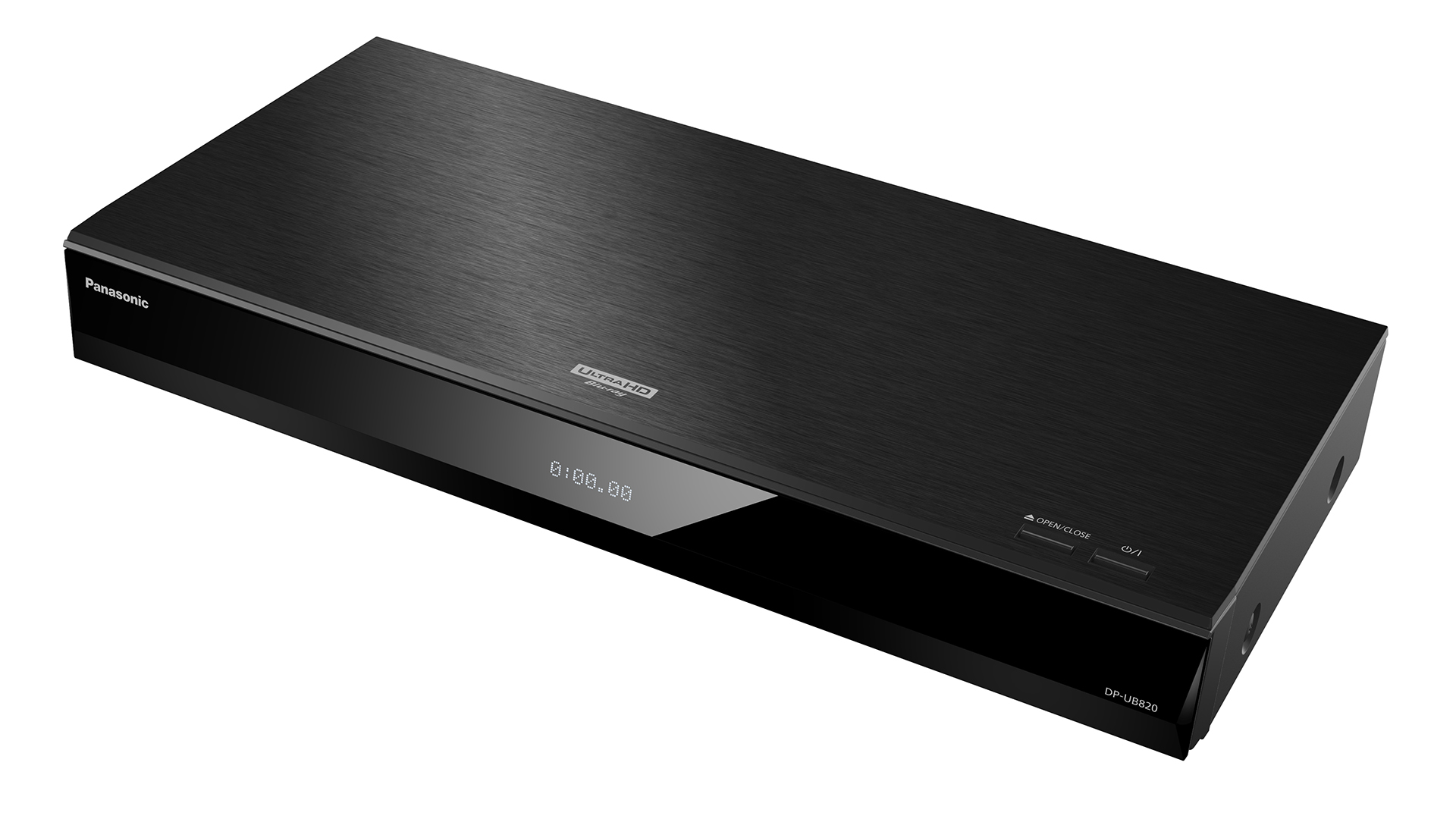
The Panasonic compliments its exciting picture with a sound to match. The DP-UB820 delivers a weighty and powerful performance that’s capable of delivering explosions with plenty of gusto, but also in a controlled manner.
It’s a more muscular and grown up sound than many budget players, with rich dialogue irrespective of whether the scene is quiet or characters are caught up in an avalanche of surround effects.
We spin the Dolby Atmos soundtrack to Spiderman Homecoming on 4K Blu-ray and head to the chapter where our intrepid hero meets the Vulture for the first time on the Staten Island Ferry.
As the Vulture’s high-tech weapon rips through the ship, the laser pulses with weight and purpose as it tears through the ferry’s metal structure. The Panasonic delivers each slicing blow with with plenty of force before one final huge pulse puts an exclamation point on the whole scene. It’s an exciting performer that doesn’t struggle to hold your attention.
It’s a similar case with music playback too. During Inception, as the team attempt to breach the snow fortress, the orchestral score kicks off with a weighty and deliberate swell of sound, setting the tone for the action that follows. There’s a weight and depth to bass notes that adds to the drama unfolding in front of you. The Panasonic could be a bit more communicative with subtle low-level shifts and swings in dynamics, but otherwise it’s an accomplished performer.
Verdict
If you’ve bought into the 4K Blu-ray format and have a suitable home cinema set-up, you need a dedicated player that can deliver on multiple fronts. The Panasonic DP-UB820 is just that, supporting all major HDR formats, delivering a hugely immersive and impactful picture, backed up by a strong audio performance. At this price, it’s a great buy.
Review published: 2019. Review updated: November 2024.
SCORES
- Picture 5
- Sound 5
- Features 4
MORE:
See all the What Hi-Fi? Award 2022 winners
Read our Panasonic DP-UB9000 review
What Hi-Fi?, founded in 1976, is the world's leading independent guide to buying and owning hi-fi and home entertainment products. Our comprehensive tests help you buy the very best for your money, with our advice sections giving you step-by-step information on how to get even more from your music and movies. Everything is tested by our dedicated team of in-house reviewers in our custom-built test rooms in London, Reading and Bath. Our coveted five-star rating and Awards are recognised all over the world as the ultimate seal of approval, so you can buy with absolute confidence.
-
philmcgowan You guys really need to stop reviewing the sound of Blu Ray players in the manner you appear to be doing so.Reply
In this review, you're commenting on the Dolby Atmos sound, which must mean you're using the HDMI connection for the BluRay player to an AV receiver.
What that means is that the BluRay player is doing absolutely nothing to the sound, it's simply passing the data from the disc to the receiver and all the processing and digital to analog conversion is happening on the AV receiver, soundbar, or TV (if you're using built in speakers which dear god I hope you aren't).
The only time you should ever be reviewing the sound of a BluRay player is if you're using the built in Analog outputs of the player. In that case then yes, absolutely, the built in audio processing of the player is being put to the test.
But if you're just passing audio from the BluRay player over HDMI, it's simply a data transfer. No sound processing should be happening on the player side if you set it up right. It just sends the Dolby Atmos data to the receiver and all the processing and conversion is happening there. -
Johan-J You guys need to CONTINUE reviewing the sound of Blu-ray players in the manner you are doing so.Reply
Picture wise there's not much difference between all tested 4K players nowadays when playing a 4K disc. But sound wise there are some differences. This because the internal chip does 'translate' the audio track on the disc before it sends it to the receiver through HDMI. For example, hearing the opening scene of Saving Private Ryan you'll notice that the Sony X700 has more subtlety while the Panasonic UB820 has a more weighty (with excellent and dynamic bass) and vibrant sound that feels more energetic.
I own (or owned) the following 4K Blu-ray players and sound wise from best to less good in my opinion are:
1. Panasonic UB820 (and UB 420): most weighty and vibrant sound and suited for the best movie experience
2. LG UBK90: quite similar sound but just not as refined
3. Sony X700: subtle sound with good and solid bass
4. Samsung M9500: natural and balanced sound but could be more dynamic
5. Sony X800M2: detailed sound but the bass is not strong and dynamic enough for movies
Johan (The Netherlands) -
Arron Replyphilmcgowan said:You guys really need to stop reviewing the sound of Blu Ray players in the manner you appear to be doing so.
But if you're just passing audio from the BluRay player over HDMI, it's simply a data transfer. No sound processing should be happening on the player side if you set it up right. It just sends the Dolby Atmos data to the receiver and all the processing and conversion is happening there.
No and no.
Are the 1s and 0s that arrive from each player the same? Yes. Does that mean they sound the same? No. All circuits make noise. What you're hearing from each player is noise and jitter.
A longer explanation from an audio engineer: ld68LCIRqQgView: https://www.youtube.com/watch?v=ld68LCIRqQg -
manicm As long as a disc is being rotated, the notion of bits is bits is a fallacy in the context of a physical transport, audio and visual DACs and so on.Reply
So you’re BOTH wrong.
Which is why I’ve long called for movie discs and players to be binned in the nearest rubbish dump. We have the bandwidth, allow consumers to purchase and download digital copies of 4K movies.
Why on Earth are we still using movie discs? -
Arron Reply
Because most people don't have the disc space for a collection. Standard digital downloads of movies are 1-4GB each -- not a problem. But they're much lower quality than Blu-Rays which are normally 35-50GB each. I ripped all of my discs onto a NAS and it cost me £600 just for the hard drives. The NAS is already over 80% full.manicm said:Why on Earth are we still using movie discs? -
manicm ReplyArron said:Because most people don't have the disc space for a collection. Standard digital downloads of movies are 1-4GB each -- not a problem. But they're much lower quality than Blu-Rays which are normally 35-50GB each. I ripped all of my discs onto a NAS and it cost me £600 just for the hard drives. The NAS is already over 80% full.
Disk space is really not an issue these days - and I'm not talking about using a NAS. I'm talking about solid state, discless 4K or higher video players with a USB port where you can just plug a stick, or drive in to watch movies. You don't need to store every purchased download there - that's what portable disk drives are for.
I'm essentially talking about the video equivalent of music streamers, but with a USB-A/USB-C port.
Also, studios can make available compressed 4K videos in the format that Netflix uses in order to save space. -
Arron Reply
Disc space really is still an issue. I had to buy 24TB for my collection. That was skipping most of the extras on the discs. Movie files are big. We'll get there in the next decade but we're not there now. USB sticks with the same capacity as a Blu-Ray are about £15 each versus a few pence for the disc.manicm said:Disk space is really not an issue these days - and I'm not talking about using a NAS.
Many players allow you to plug in an USB stick and play files and you can already stream movies that you rented/bought with an Amazon Prime Stick, Apple TV, etc. but...manicm said:I'm talking about solid state, discless 4K or higher video players with a USB port where you can just plug a stick, or drive in to watch movies. You don't need to store every purchased download there - that's what portable disk drives are for.
I'm essentially talking about the video equivalent of music streamers, but with a USB-A/USB-C port.
The quality suffers a lot. You might not notice if you only ever watch streaming services but put a movie on Netflix then switch to the same movie on Blu-Ray. There's a huge difference. Pretty much exactly what you'd expect if you took a 50GB movie file and recompressed it to remove 45GB of the data.manicm said:Also, studios can make available compressed 4K videos in the format that Netflix uses in order to save space.
Again, we'll get there one day but we're not there yet. -
MickyG Replymanicm said:
Why on Earth are we still using movie discs?
Because some people, myself included, want something in a physical medium - much like some people like to collect CDs or vinyl records. If you don't understand why that is, then no explanation will suffice. -
KrystynaHaywood Replymanicm said:Which is why I’ve long called for movie discs and players to be binned in the nearest rubbish dump. We have the bandwidth, allow consumers to purchase and download digital copies of 4K movies.
Why on Earth are we still using movie discs?
It's simple to answer really... I for one am fed up of paying for monthly subscriptions, and in my 10 years before retirement will have built up a good bank of my favourite films and series then I enjoy watching over, so I can reduce down my subscriptions in pension times. I used the downloaders and accounts a few years ago, and n ow, Ultraviolet, Flixter and Vudu, all I signed up into and GONE.... That is why I now use Movie Discs... chuff to all of them.... I enjoy Netflix, Prime and I get the positives of being able to watch new content on a regular basis, but frustrating that each service has their own content, so you have to subscribe to all, although Amazon is the better buy as an Amazon customer. Like Vinyl's, you can't beat that vintage feeling of owning a vinyl or a Blu-Ray... All these subscriptions, and I still can't play Superman films for free as part of membership... That's why we're still using movie discs... -
Stanny1 My OPPO Blu-Ray will play SACD as well as my $99 Sony Blu-Ray Player. As for Netflix, I really miss their rental program. Most old and foreign movies will never be streamed. I used to rent on Netflix and copy their movies using DVD Fab so I have quite a collection. Churn and Burn.Reply


